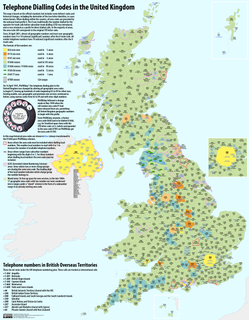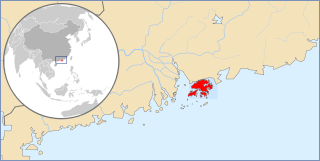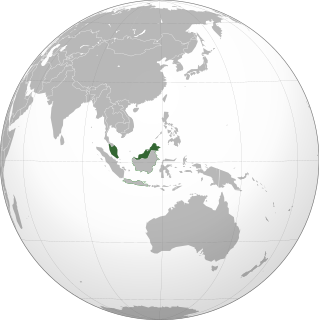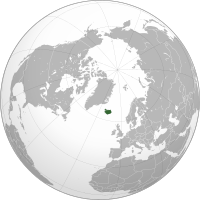A telephone numbering plan is a type of numbering scheme used in telecommunication to assign telephone numbers to subscriber telephones or other telephony endpoints. Telephone numbers are the addresses of participants in a telephone network, reachable by a system of destination code routing. Telephone numbering plans are defined in each of the administrative regions of the public switched telephone network (PSTN) and in private telephone networks.

Telephone numbers in the United Kingdom are administered by the Office of Communications (Ofcom). For this purpose, Ofcom established a telephone numbering plan, known as the National Telephone Numbering Plan, which is the system for assigning telephone numbers to subscriber stations.
The Australian telephone numbering plan describes the allocation of phone numbers in Australia. It has changed many times, the most recent major reorganisation by the Australian Communications & Media Authority taking place between 1994 and 1998.

Telephone numbers in China are organized according to the Chinese Telephone Code Plan. The numerical formats of landlines and mobile phones are different: landlines have area codes, whereas mobile phones do not. In major cities, landline numbers consist of a two-digit area code followed by an eight-digit inner number. In other places, landline numbers consist of a three-digit area code followed by a seven- or eight-digit internal number. The numbers of mobile phones consist of eleven digits.
In Argentina, area codes are two, three, or four digits long. Local customer numbers are six to eight figures long. The total number of digits is ten, for example, phone number (11) 1234-5678 for Buenos Aires is made up of a 2-digit area code number and an 8-digit subscriber's number, while (383) 123-4567 would be an example of a Catamarca number.

Telephone numbers in Hong Kong are mostly eight-digit. Fixed land line numbers start with 2 or 3, mobile (cellular) phone numbers with 5, 6, 7 or 9, pager numbers with 7 and forwarding service with 8. Since the end of 1989, there have been no area codes within Hong Kong.

Numbers on the Irish telephone numbering plan are regulated and assigned to operators by ComReg.

The dialling plan for mobile networks and new landline operators is closed; all subscriber numbers must be dialled in full. For landline numbers starting with 02, the dialling plan used to be open; the trunk digit and area code could be omitted if the caller was in the same area code as the callee. However, starting May 3, 2008, all landline numbers must be dialled in full.
Telephone numbers in Oceania use a variety of area codes to denote their location along with their own area code depending on the country's geographic makeup. They also have other prefixes to denote different types of mobile services and international calls. There are exceptions because of regional variations and time zones.

Telephone numbers in Malaysia are regulated by the Malaysian Communications and Multimedia Commission (MCMC).

Telephone numbers in Norway have the country code "+47" and up to the first 2 digits of the phone number will indicate its geographic area. Emergency services are 3 digits long and start with the number "1". Mobile numbers vary in length, either 8 digits or 12 digits.

Telephone numbers in Israel consist of an area code and a subscriber number. The dial plan type in Israel is closed, and "0" is the internal Trunk prefix in Israel. Israel's country calling code is +972.

The regulation of telephone numbers in Germany is the responsibility of the Federal Network Agency of the German government. The agency has a mandate to telecommunications in Germany and other infrastructure systems.
Telephone numbers in Estonia follow a closed telephone numbering plan.

A telephone number in Belgium is a sequence of nine or ten digits dialed on a telephone to make a call on the Belgian telephone network. Belgium is under a full number dialing plan, meaning that the full national number must be dialed for all calls, while it retains the trunk code, '0', for all national dialling.
National conventions for writing telephone numbers vary by country. While international standards exist in the form of recommendation E.123 by the sector ITU-T of the International Telecommunication Union (ITU), national telephone numbering plans define the format of telephone numbers assigned to telephones and similar communication endpoints.

The Latvian telephone numbering plan is a telephone number assigning system used in Latvia. All the numbers consist of 8 digits with exceptions for special services. The assigning process is controlled by the Electronic Communications Office and regulated by the Public Utilities Commission.

Telephone numbers in Georgia consist of 9 digits and follow a closed numbering plan in which the initial 2 or 3 digits indicate the service or area code and the remaining 6 or 7 digits identify the subscriber.
Country Code: +240
International Call Prefix: 00
Trunk Prefix:












